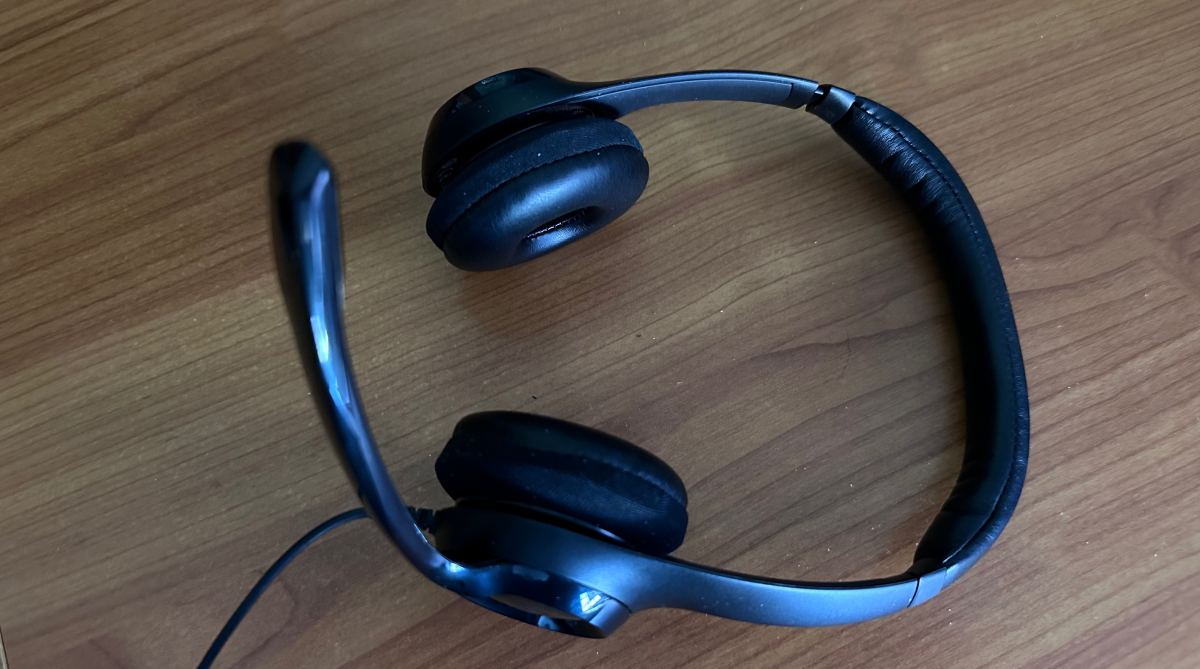Logitech H390 Wired Headset
Microphone Compression is too strong.
As a seasoned Macintosh enthusiast, I'm always on the lookout for peripherals that enhance my daily workflow. This week, let's dive into the Logitech H30 USB Headset, a versatile audio companion that promises excellent sound quality but comes with a caveat.

The Good: Sound Quality That Hits the Right Notes
The Logitech USB Headset doesn't disappoint when it comes to audio performance. Here are some highlights:
Rich Sound Profile: Slip these headphones on, and you'll be greeted by a warm and well-balanced sound. Whether you're listening to your favorite tunes, editing audio files, or participating in virtual meetings, the headset delivers clear highs, punchy mids, and satisfying bass.
Comfortable Fit: The over-ear design ensures a snug fit without causing discomfort during extended use. The plush ear cushions and adjustable headband make it suitable for those marathon work sessions.
USB Simplicity: Plug-and-play convenience is a Mac user's dream. The USB connection ensures seamless compatibility with your Mac, and you won't need to fiddle with drivers or complicated setup procedures.
Noise Isolation: The closed-back design effectively blocks out ambient noise, allowing you to focus on your tasks without distractions.
The Not-So-Good: Microphone Blues
Now, let's address the elephant in the room?the microphone. While the Logitech USB Headset shines in sound quality, the microphone isn't without quirks:
Strong Noise Compression: The microphone's noise compression can be a double-edged sword. On one hand, it minimizes background noise, ensuring your voice comes through clearly. However, it can also make your voice sound slightly robotic or overly processed.
Microsoft Teams Compatibility: Ah, the eternal struggle! Getting the headset to play nicely with Microsoft Teams can be a bit finicky. Some users report issues with recognition or configuration. Fear not?I've got a workaround for you.
Microphone on the Left: The microphone has to be on the left ear. This may not be a deal break for some people, but I am use to having the microphone on the right.
Tips for Taming the Microphone Beast in Microsoft Teams
Adjust Microphone Sensitivity: In Teams, navigate to your audio settings. Tweak the microphone sensitivity to find the sweet spot. Sometimes a slight adjustment can make a world of difference.
Test Different USB Ports: Sometimes, the port matters. Try connecting the headset to different USB ports on your Mac. You might stumble upon the magic combination.
Firmware Updates: Check if Logitech offers any firmware updates for your headset. These updates often address compatibility issues.
Fallback to Computer Microphone: If all else fails, stick with your Mac's built-in microphone for Teams calls. It's not ideal, but it gets the job done.
In Conclusion
The Logitech USB Headset strikes a balance between sound quality and microphone quirks. If you're primarily using it for music, podcasts, or video editing, it's a solid choice. For Teams calls, keep experimenting until you find the right setup. And remember, even Mac pros like us encounter a few bumps in the road?just consider them part of the adventure!
